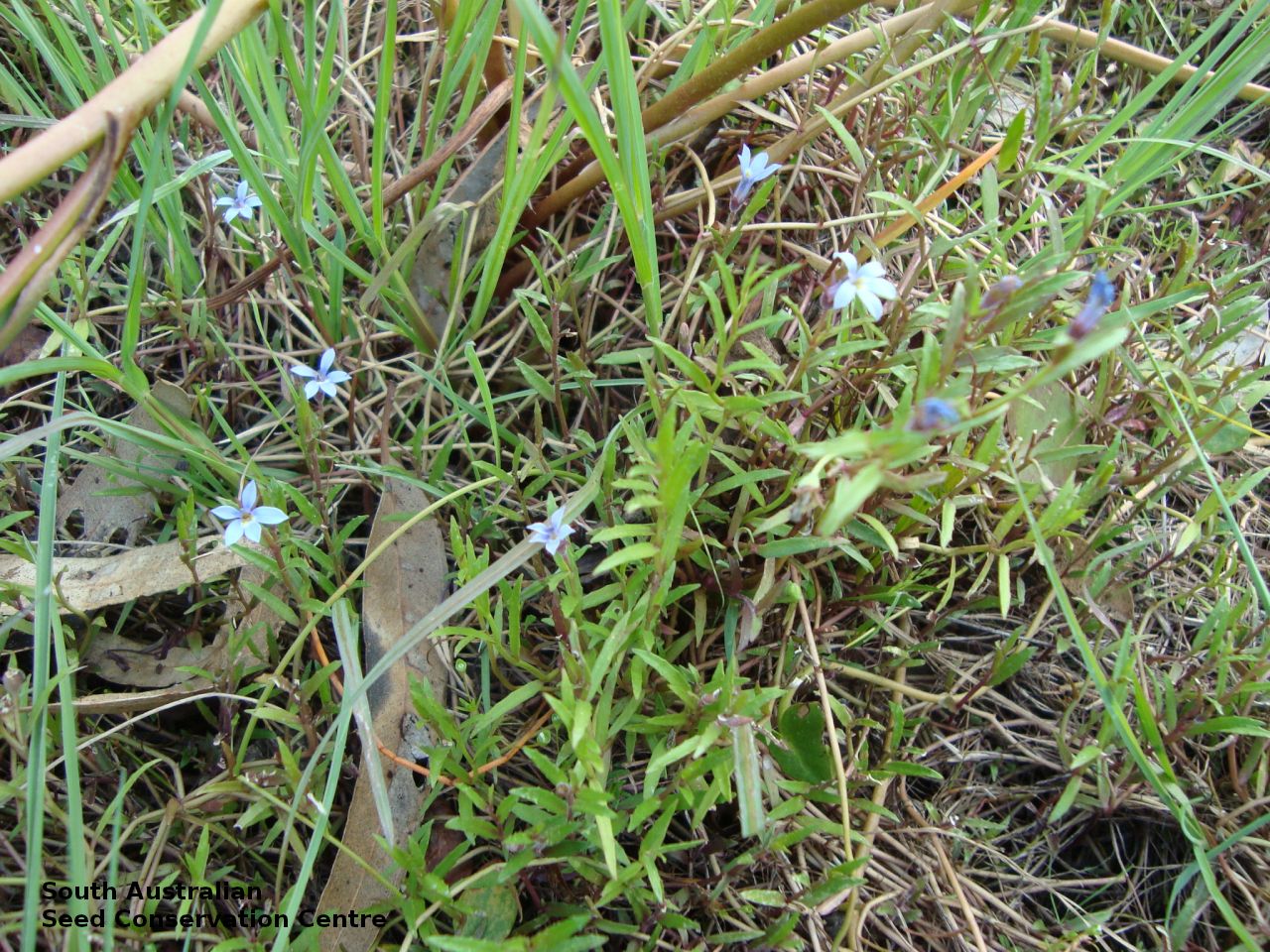
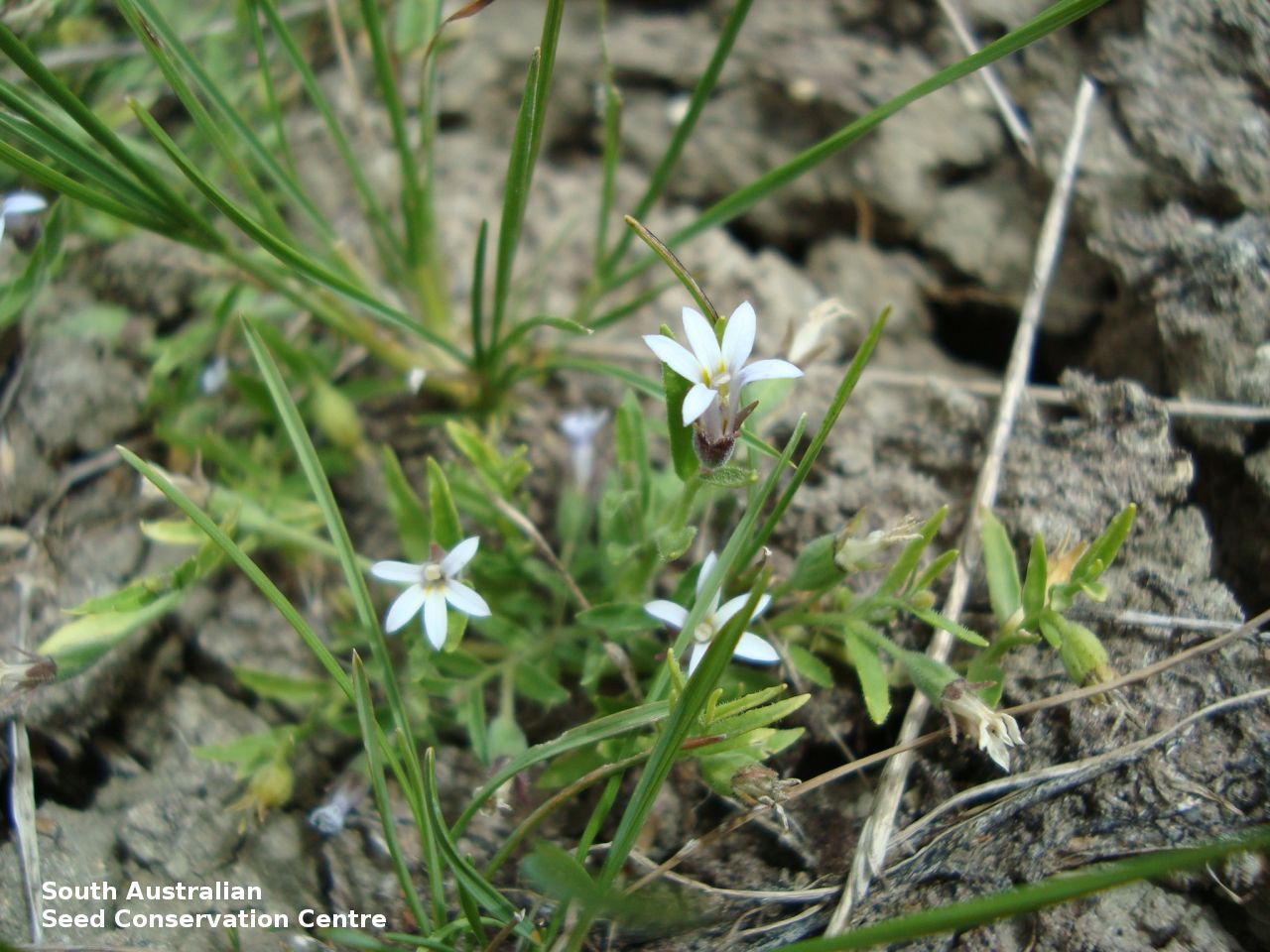
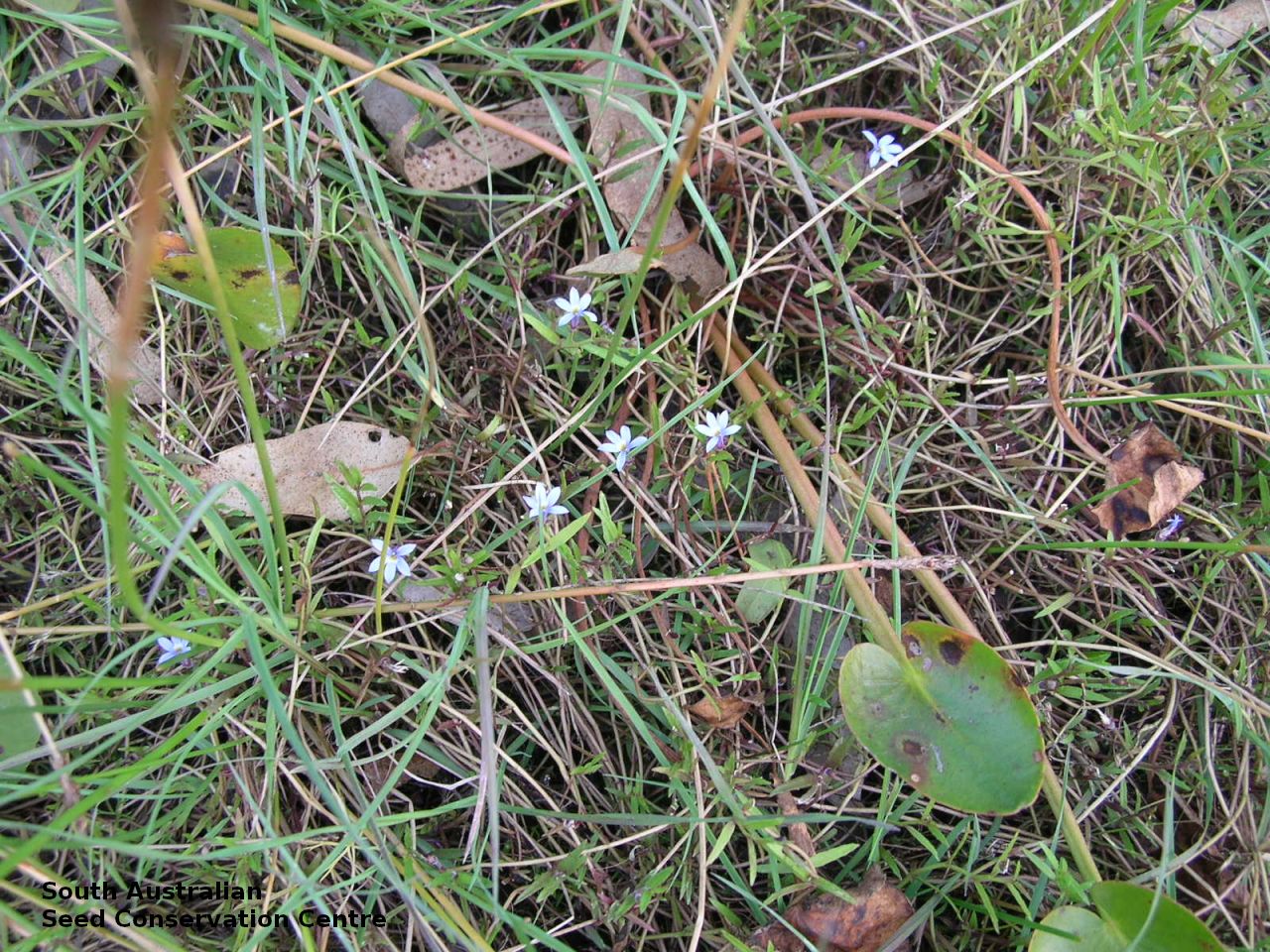
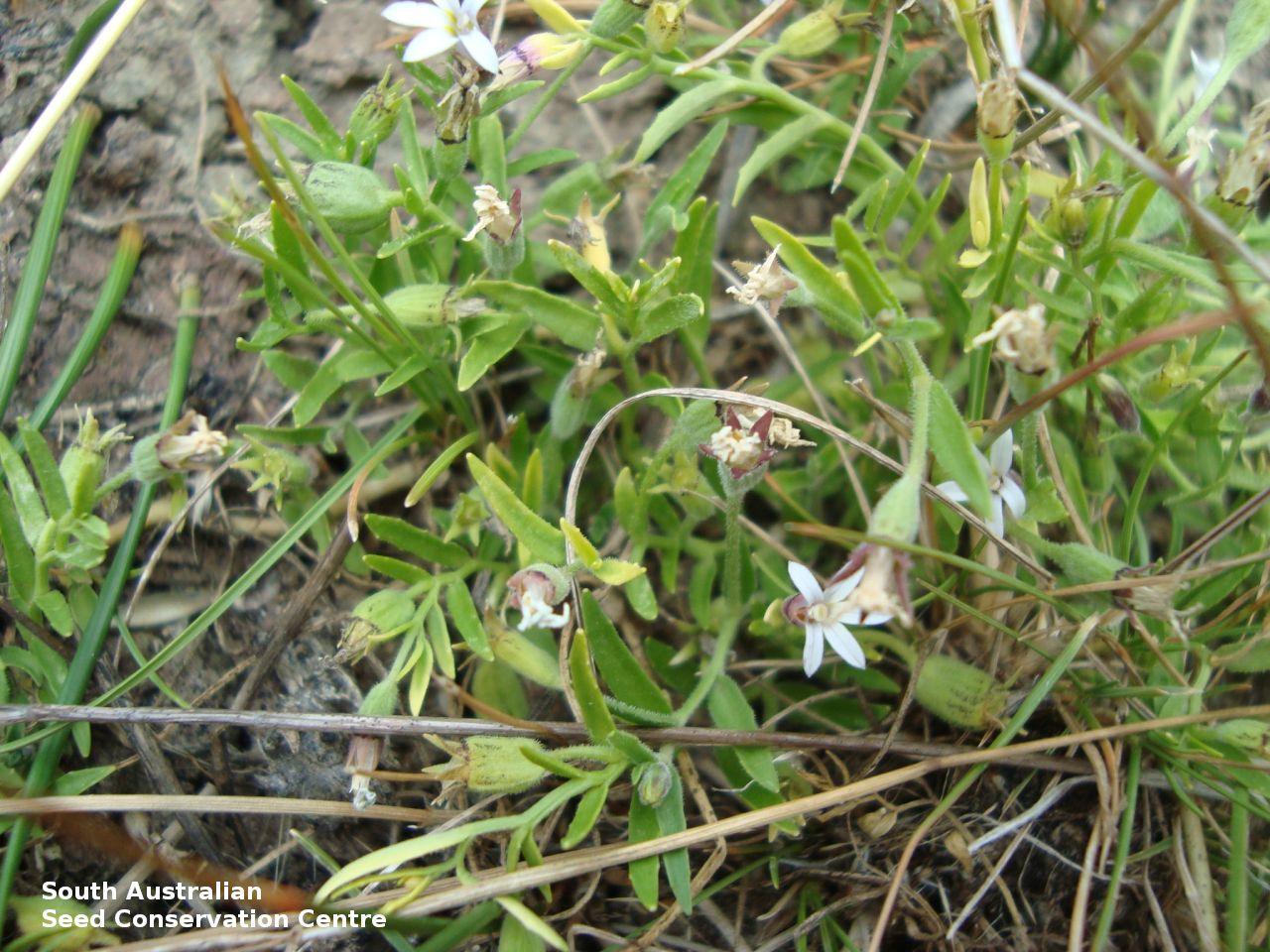
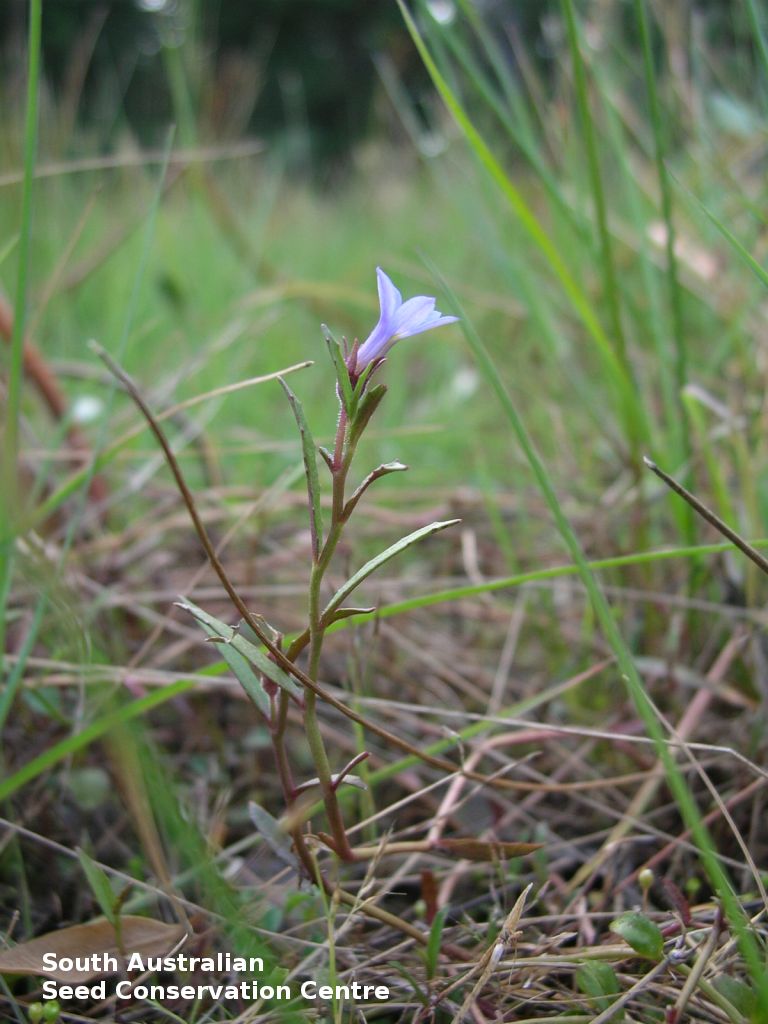
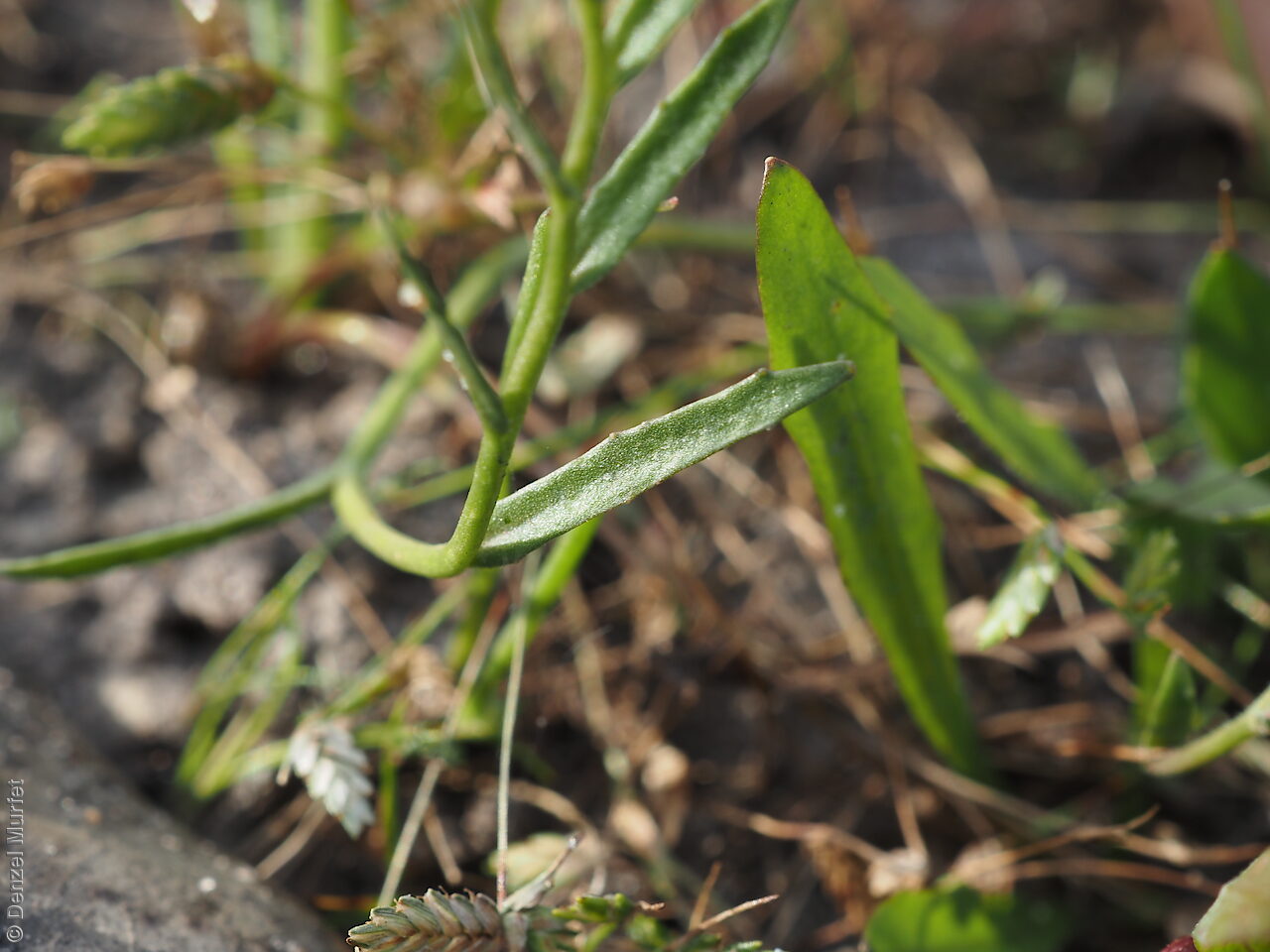
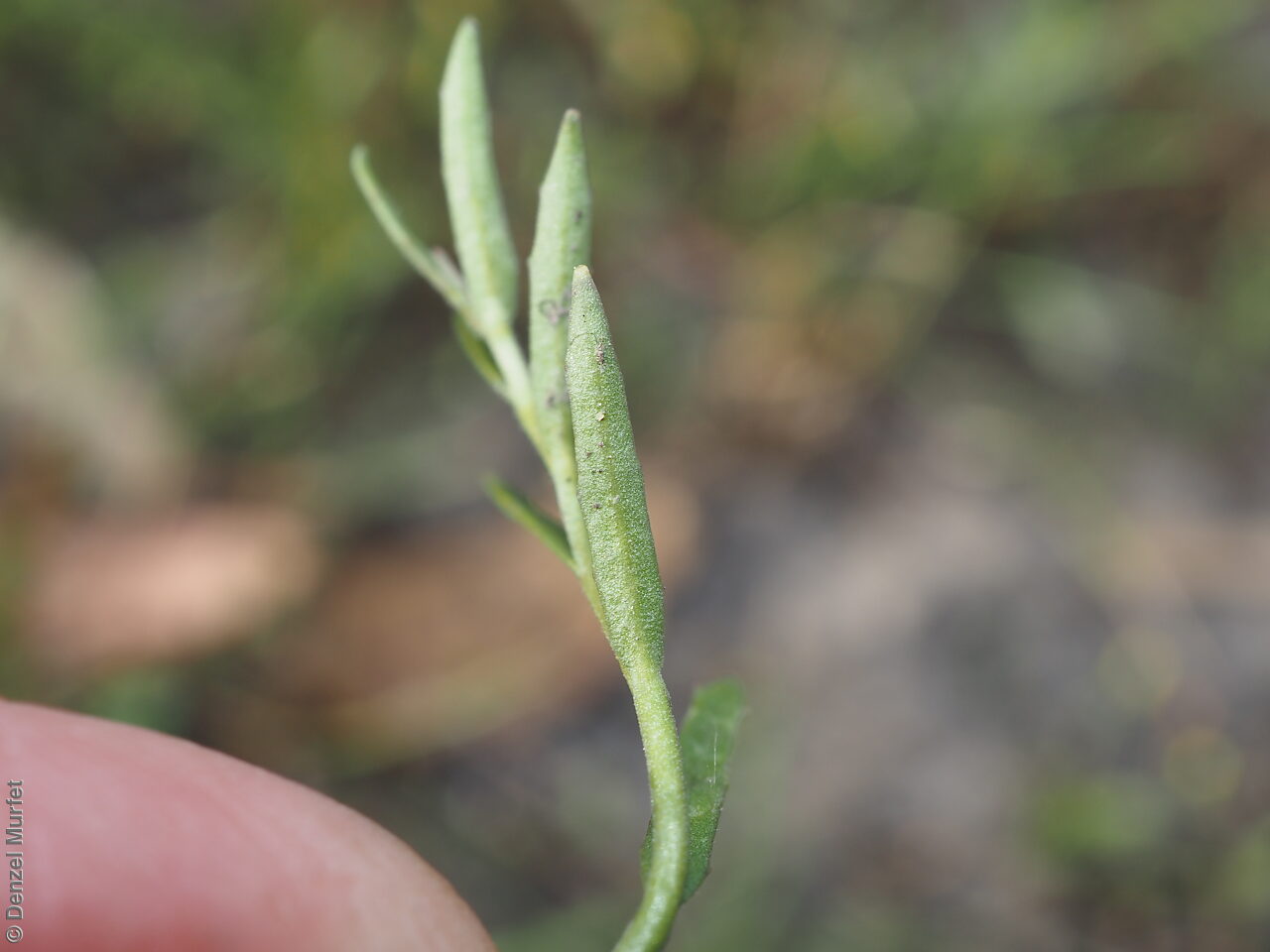
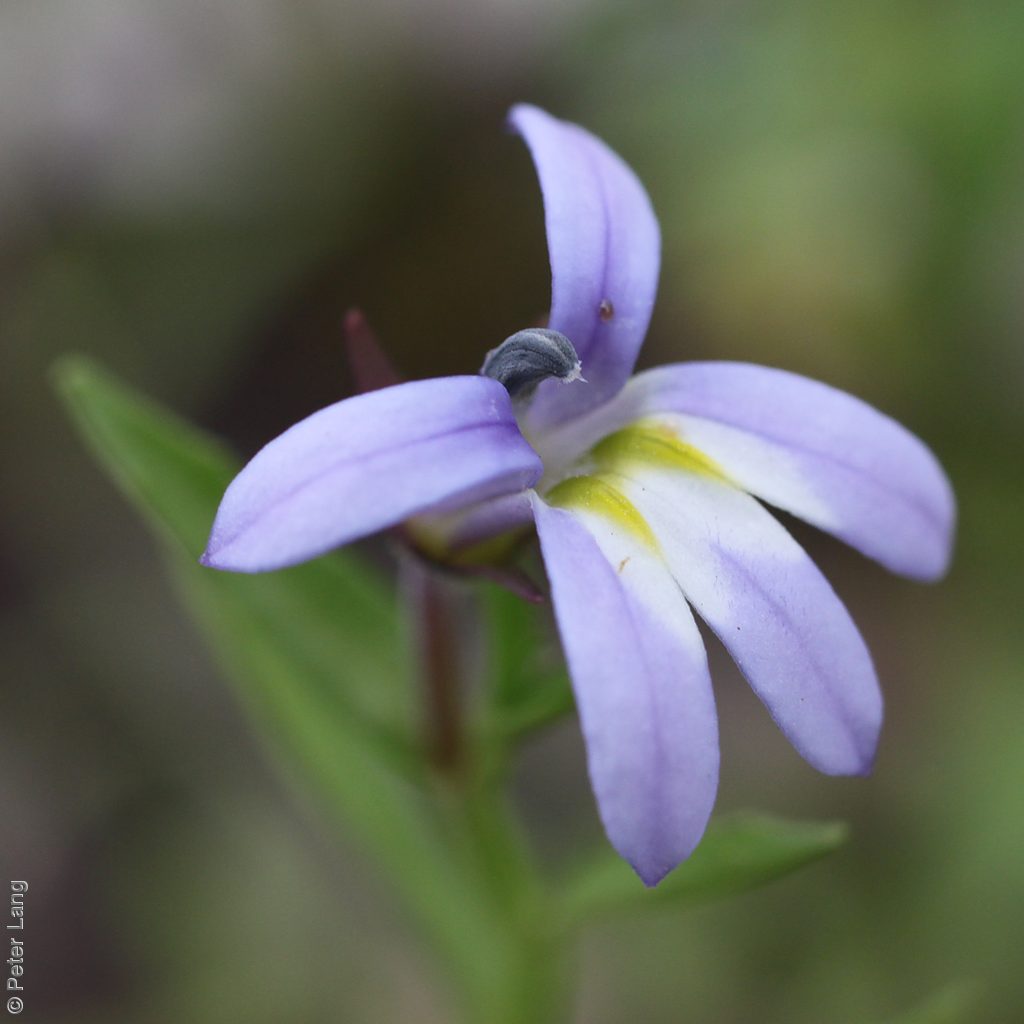
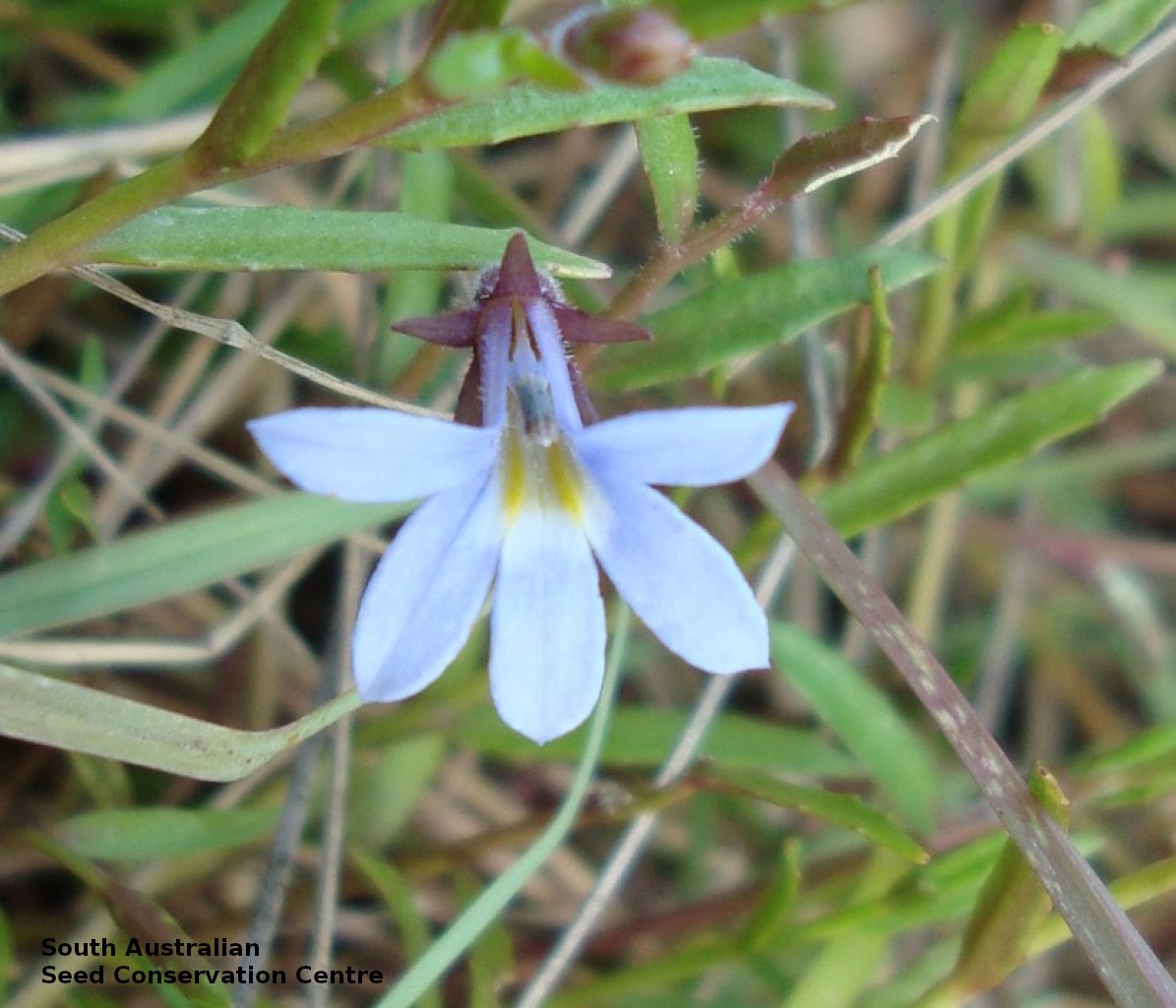
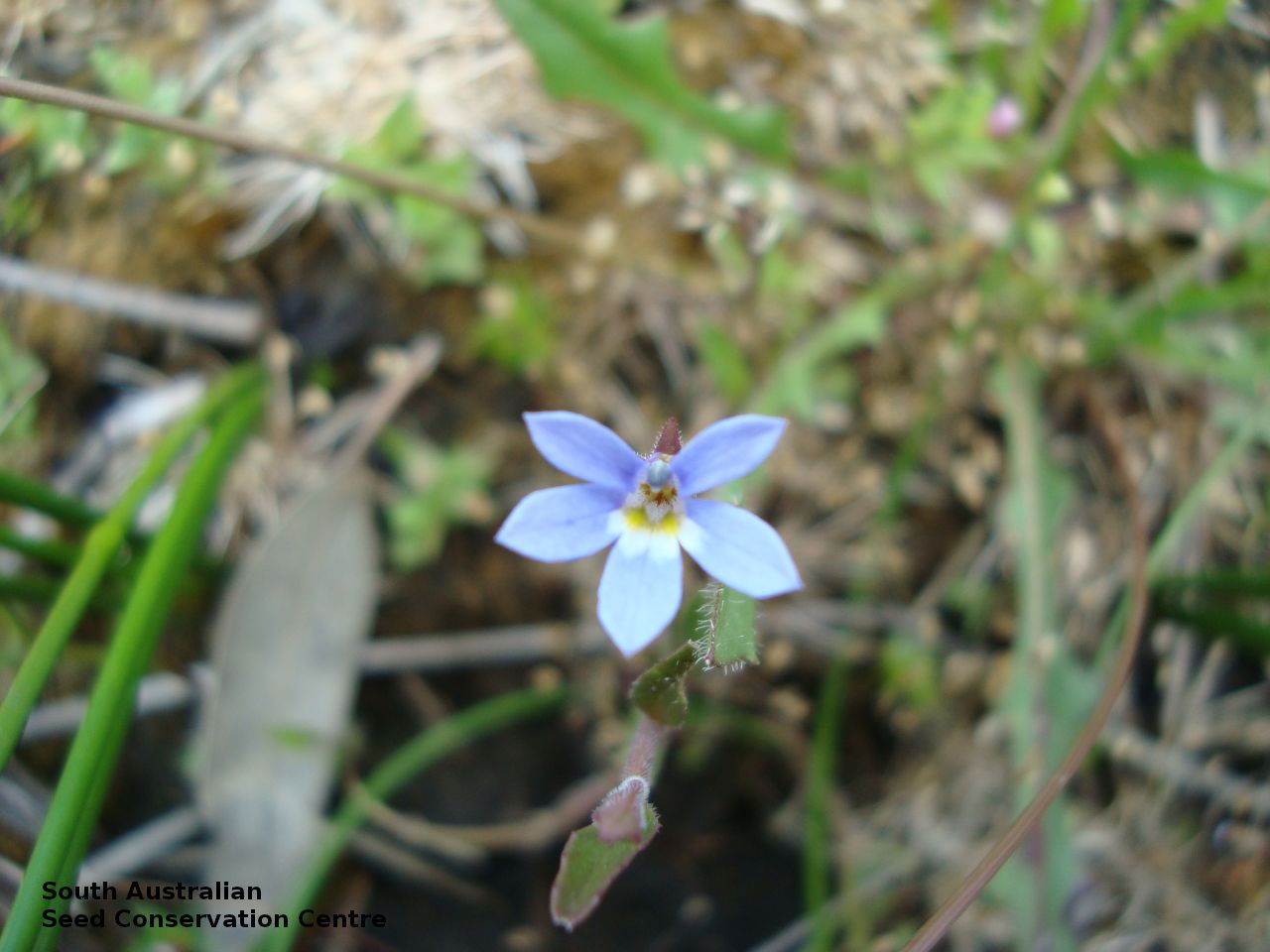
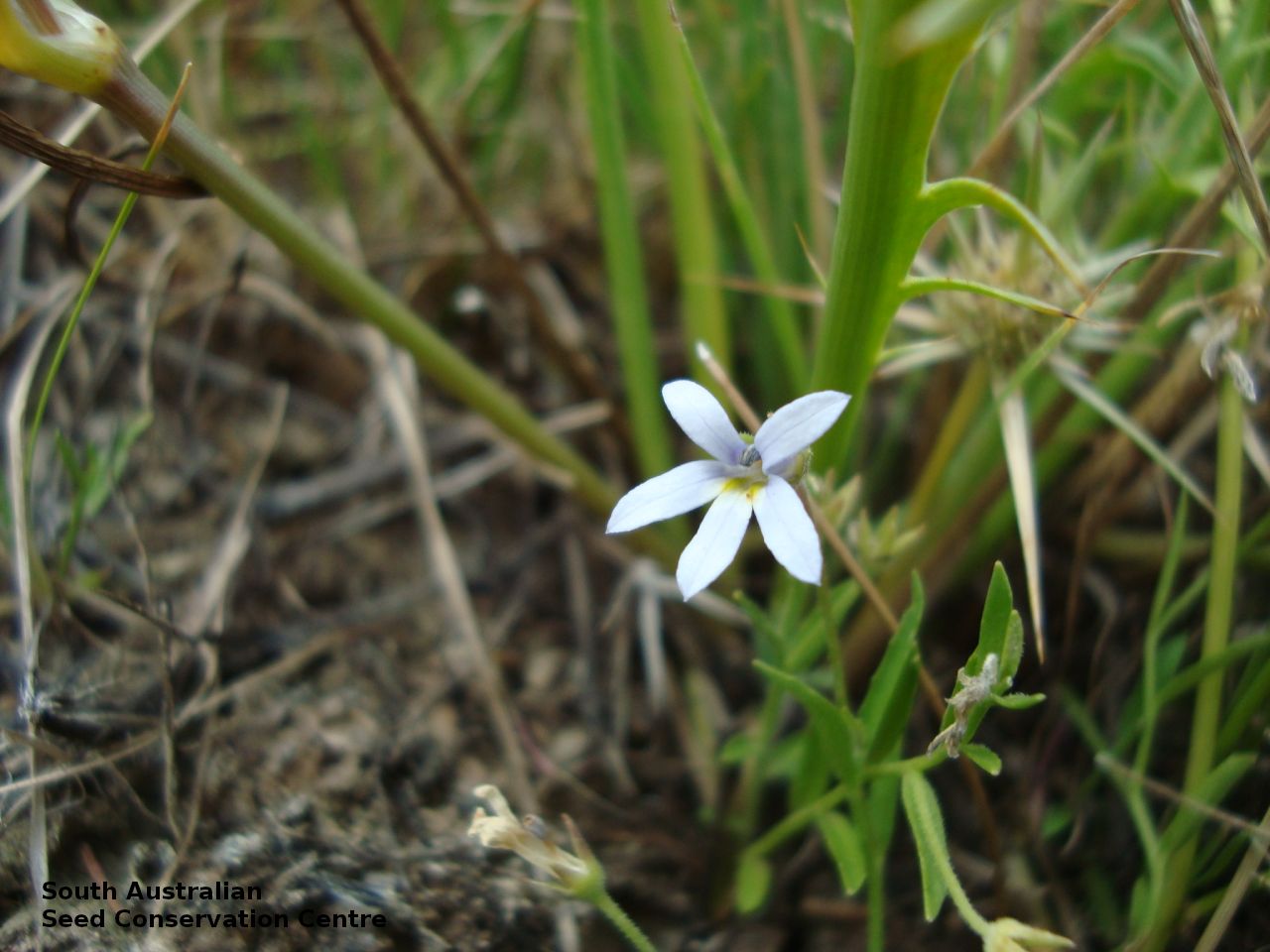
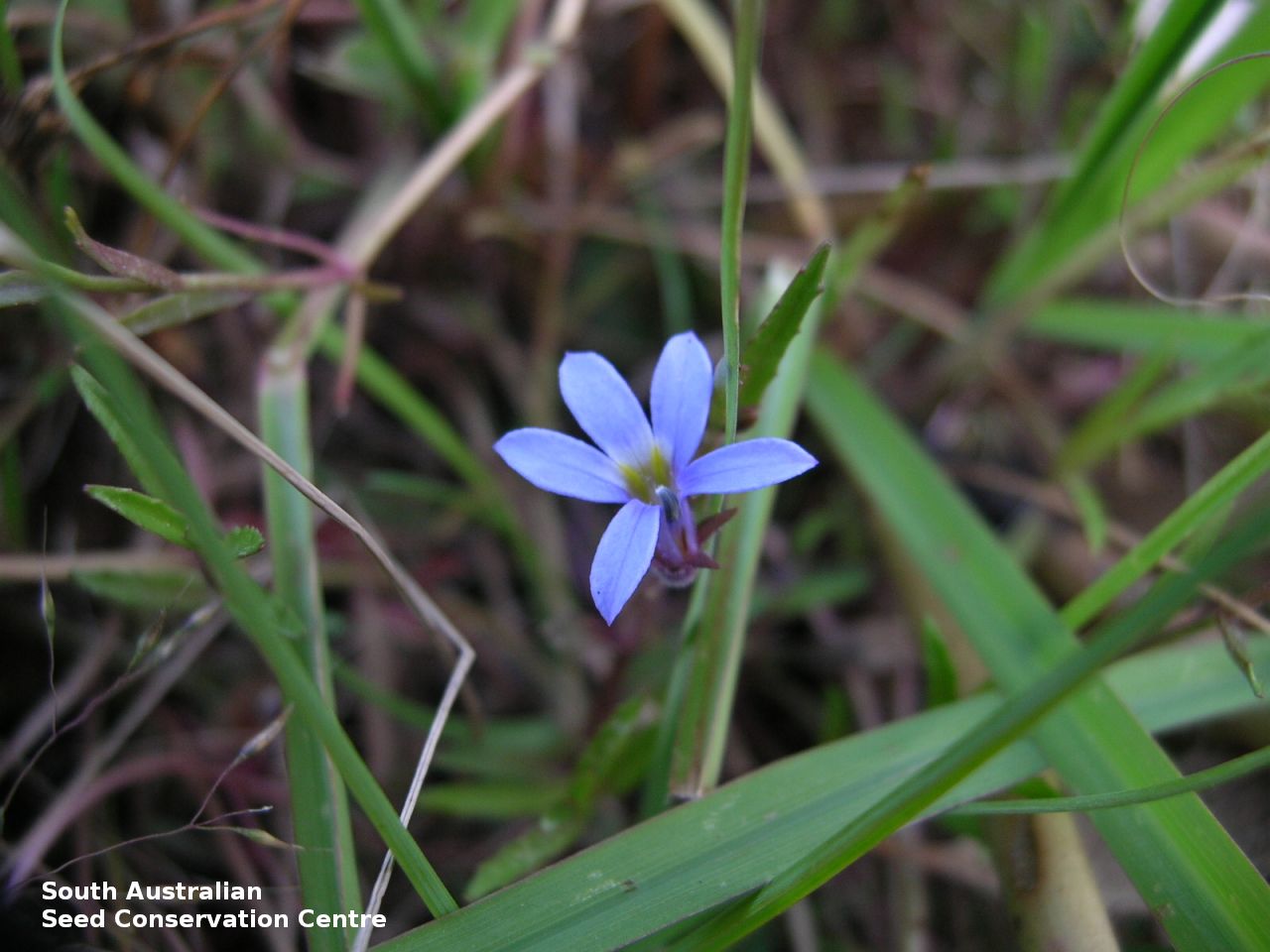
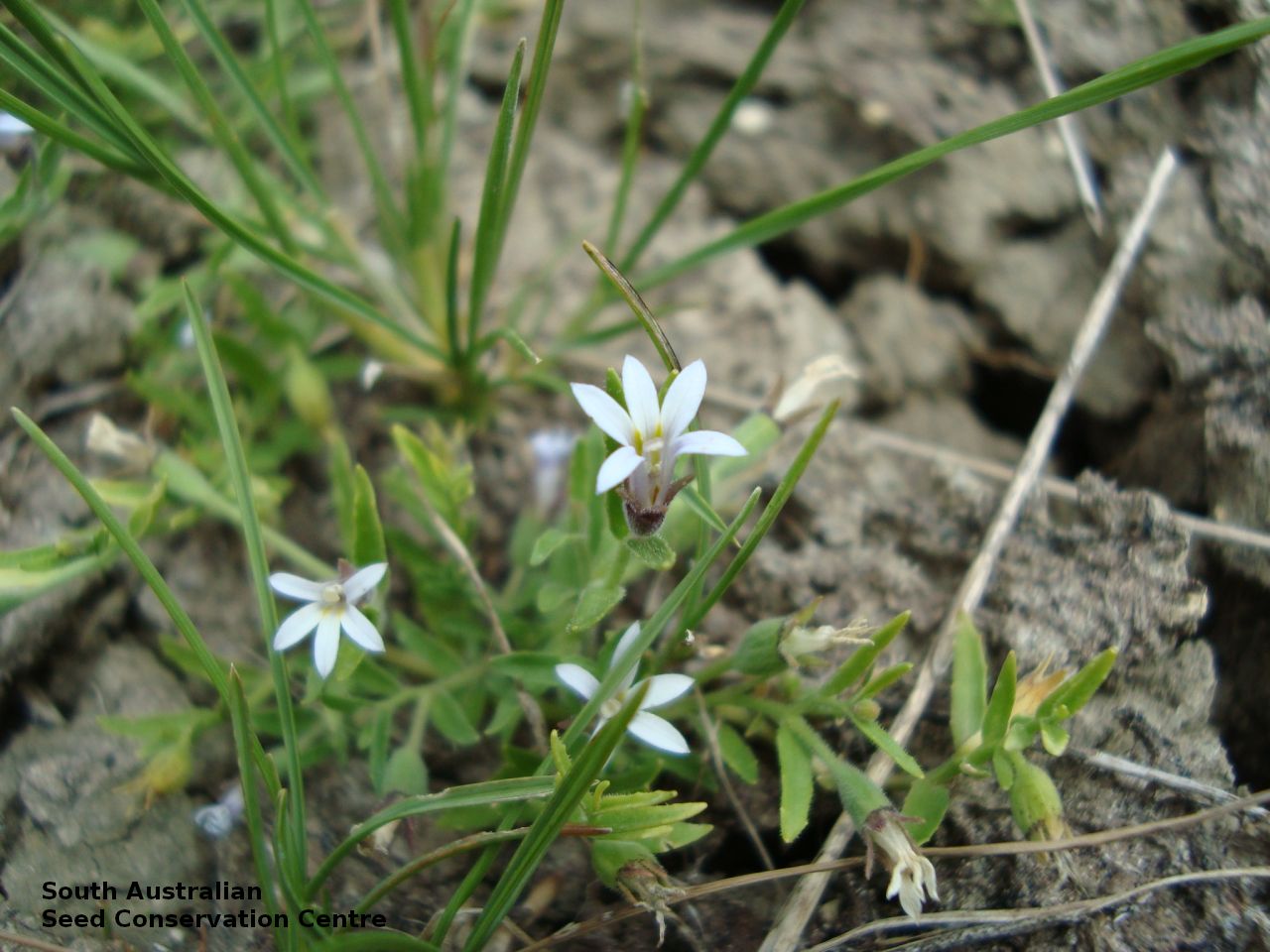
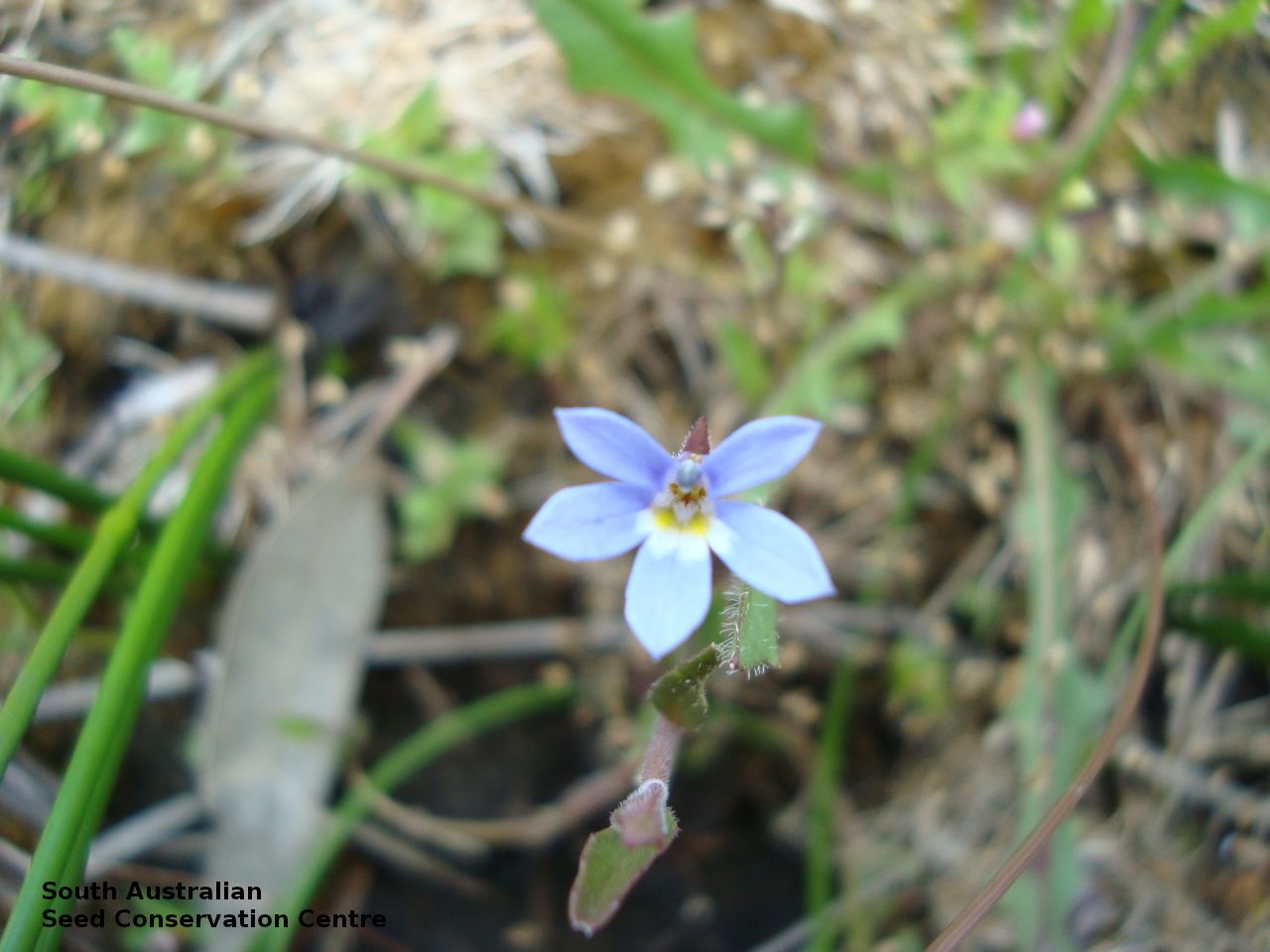
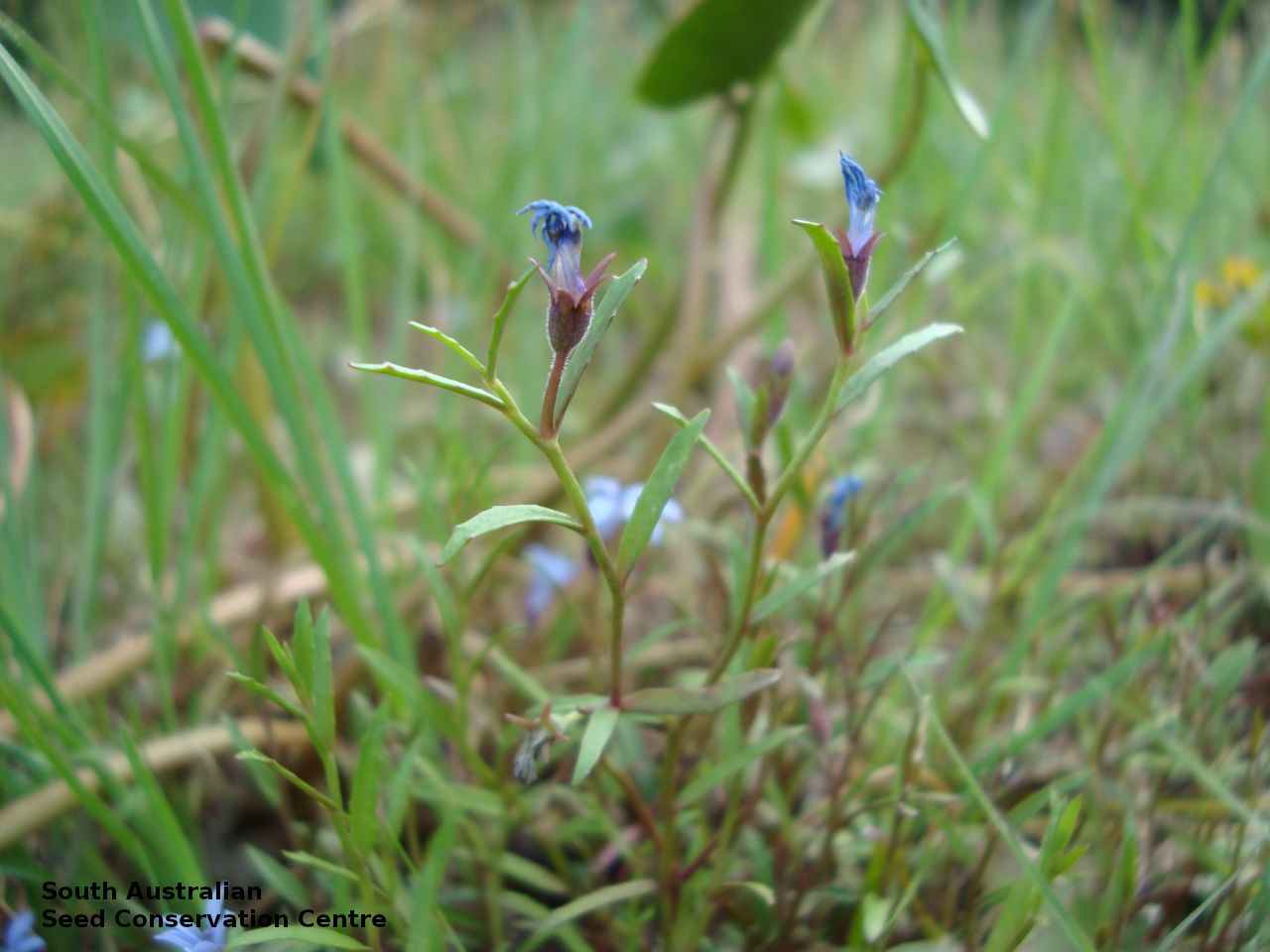
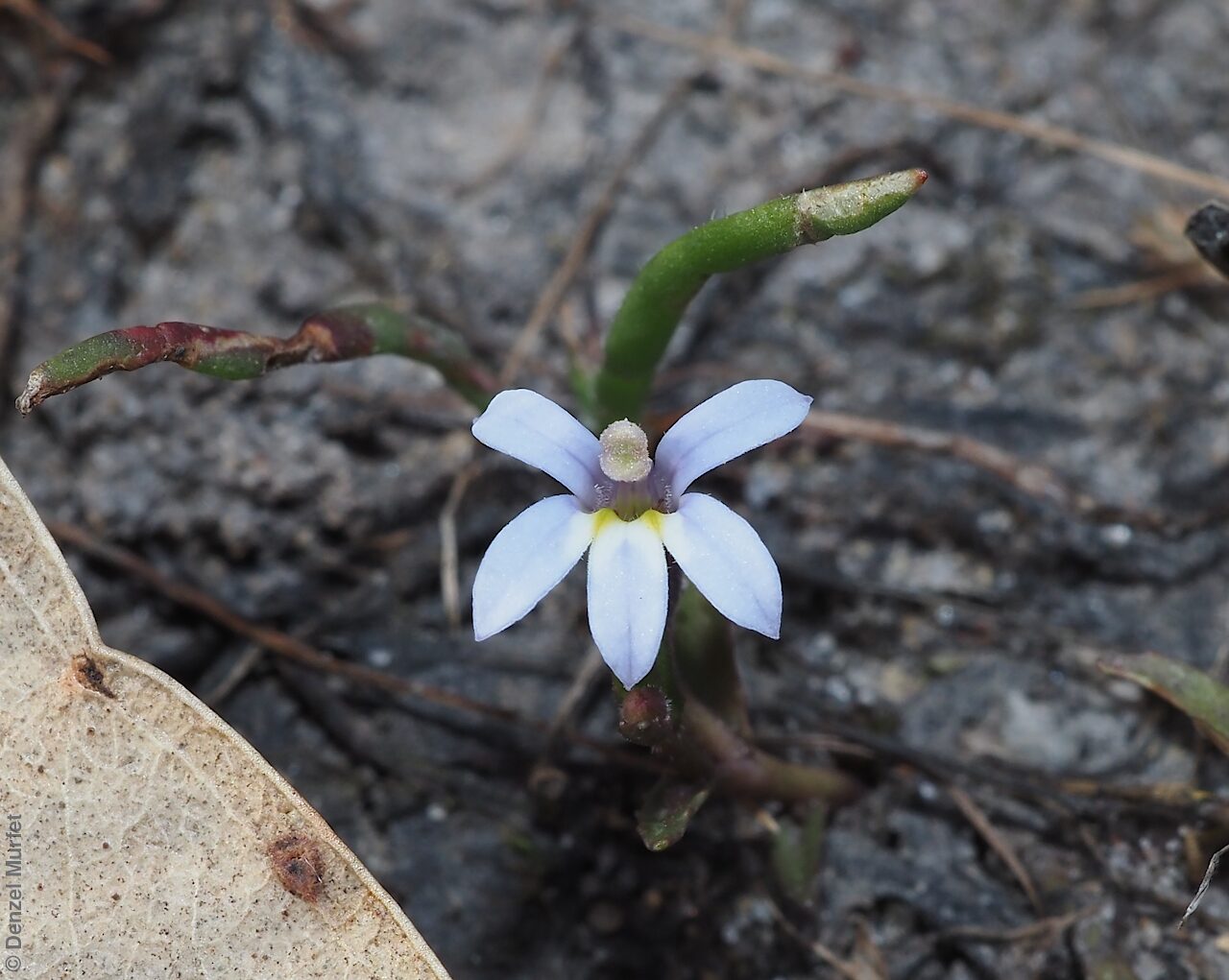
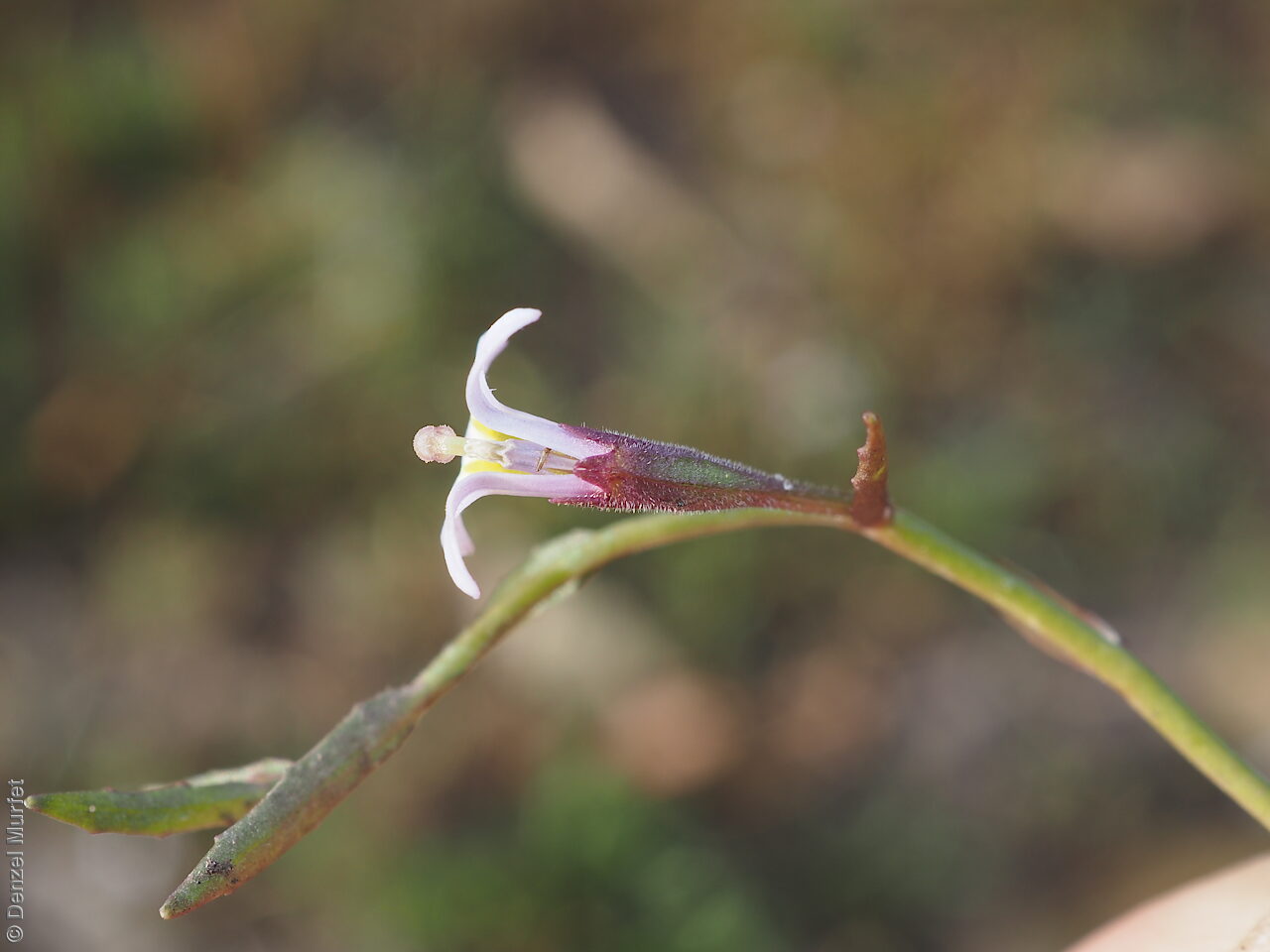
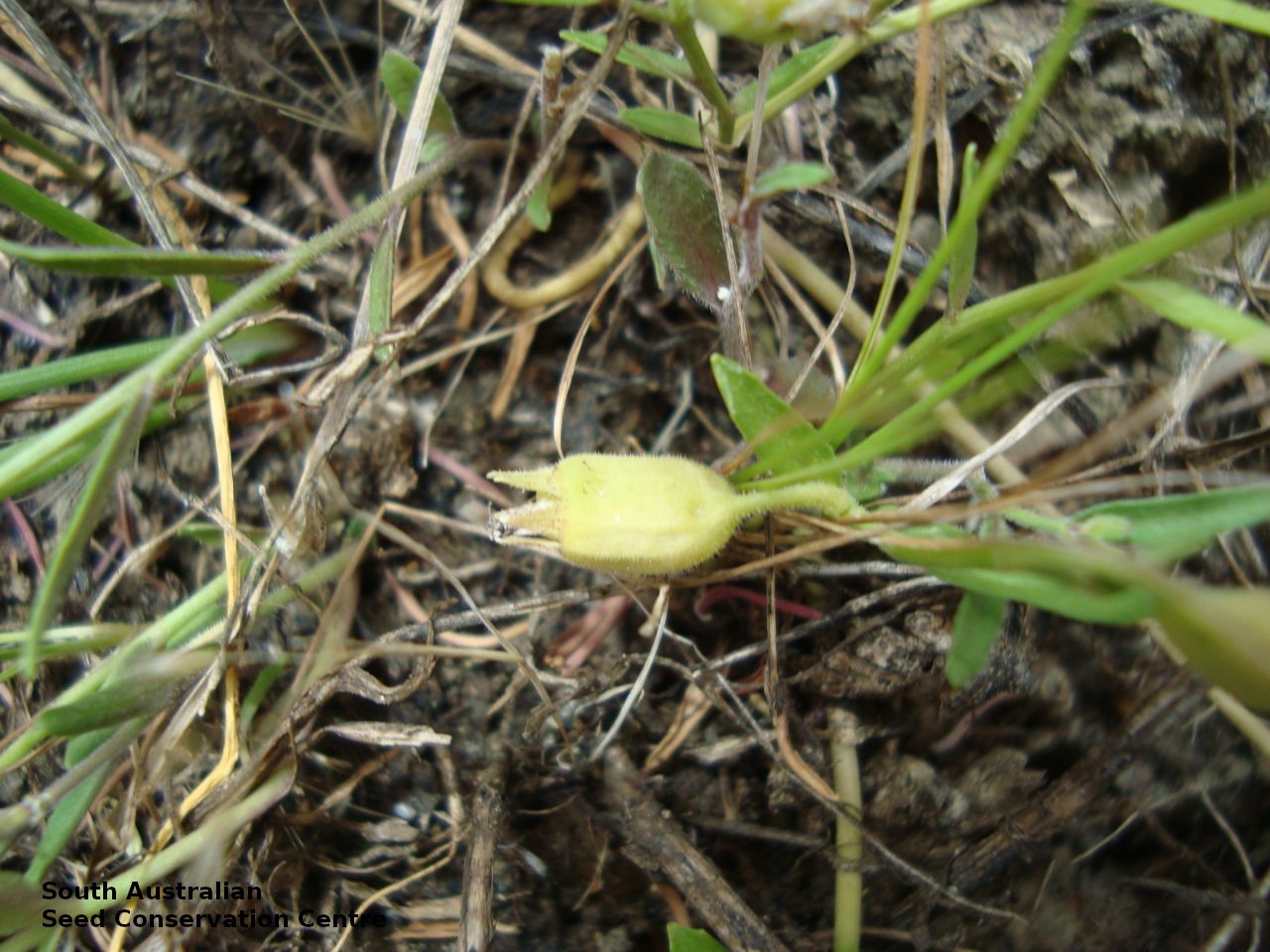
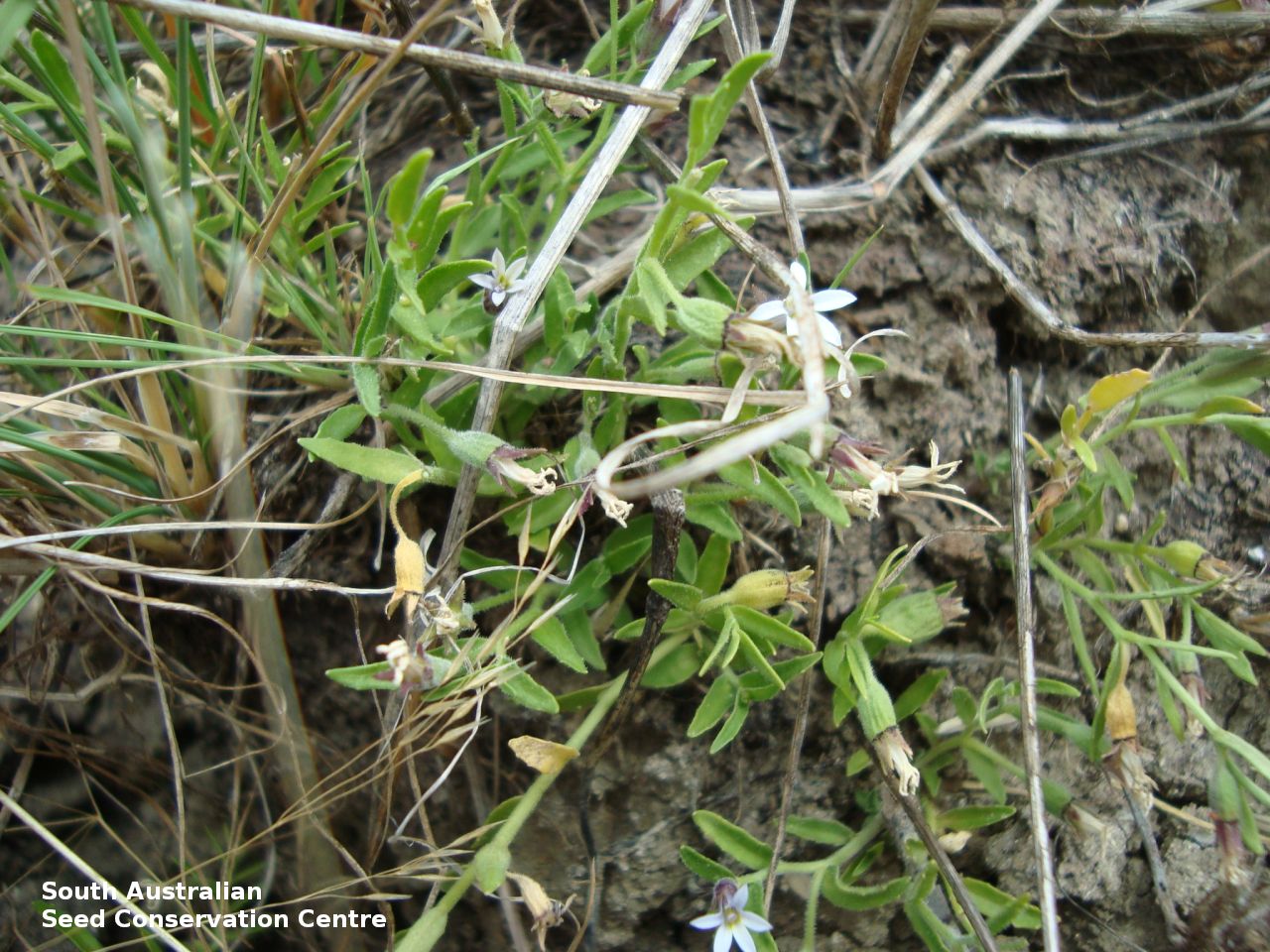
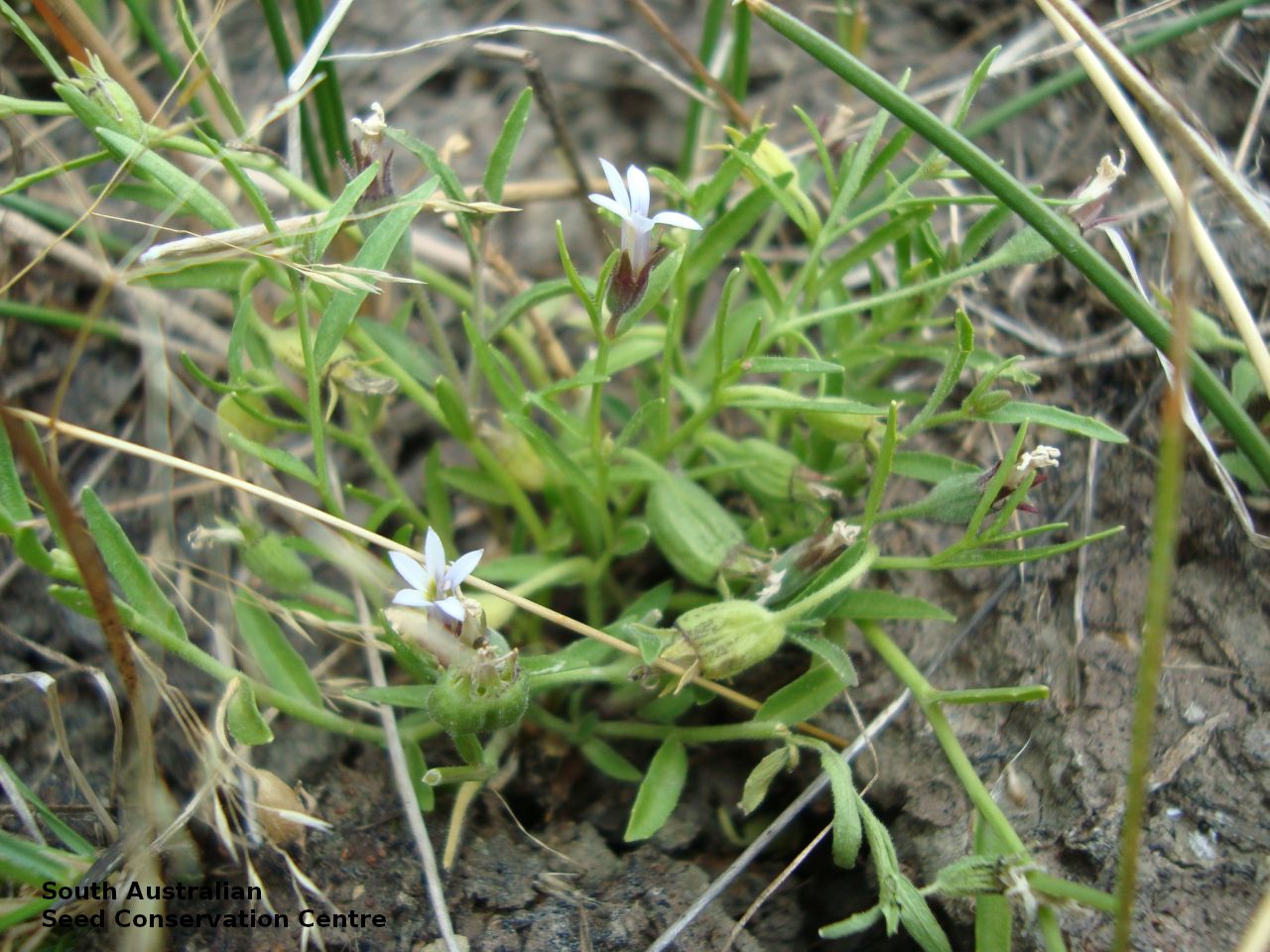
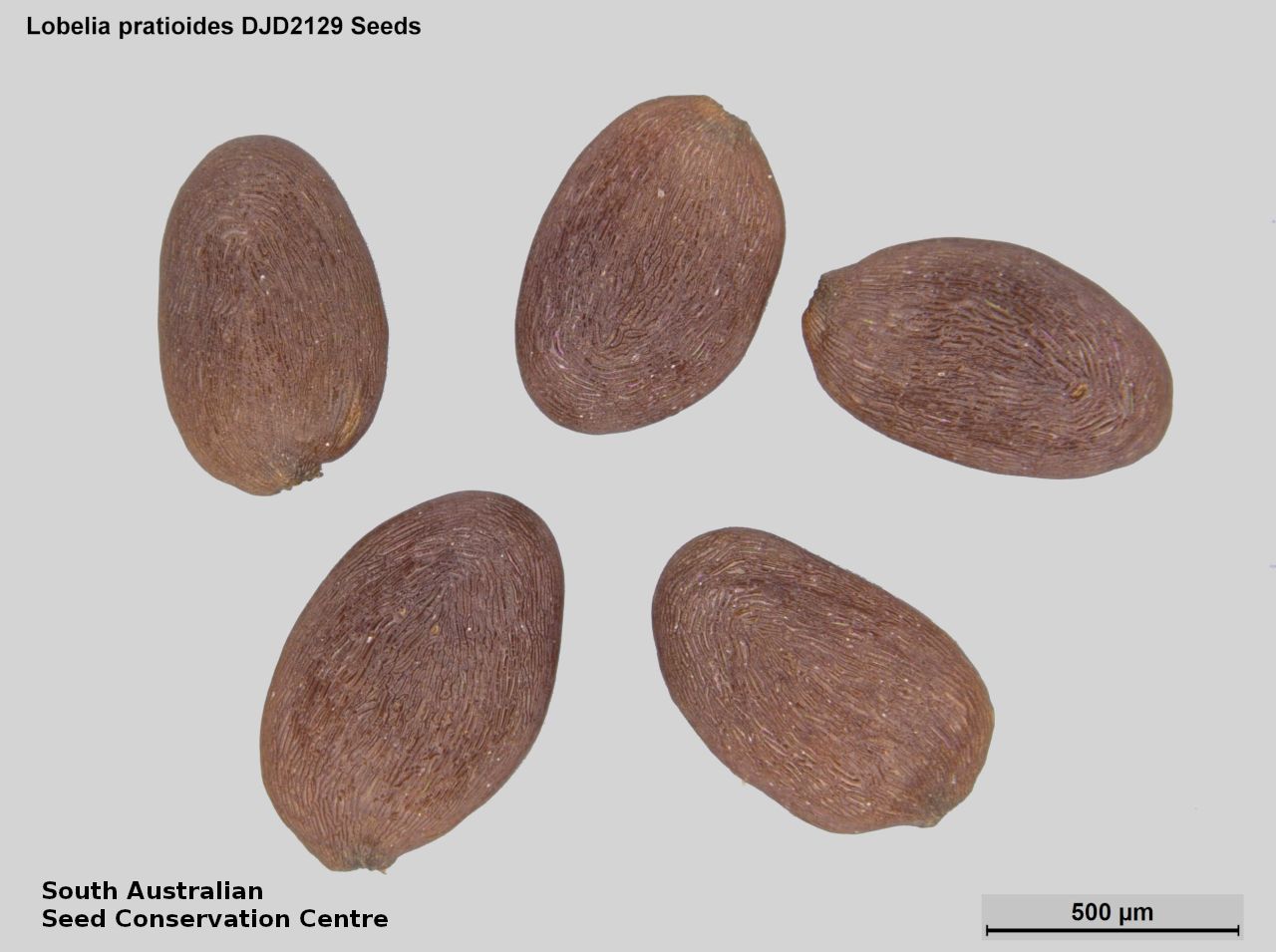
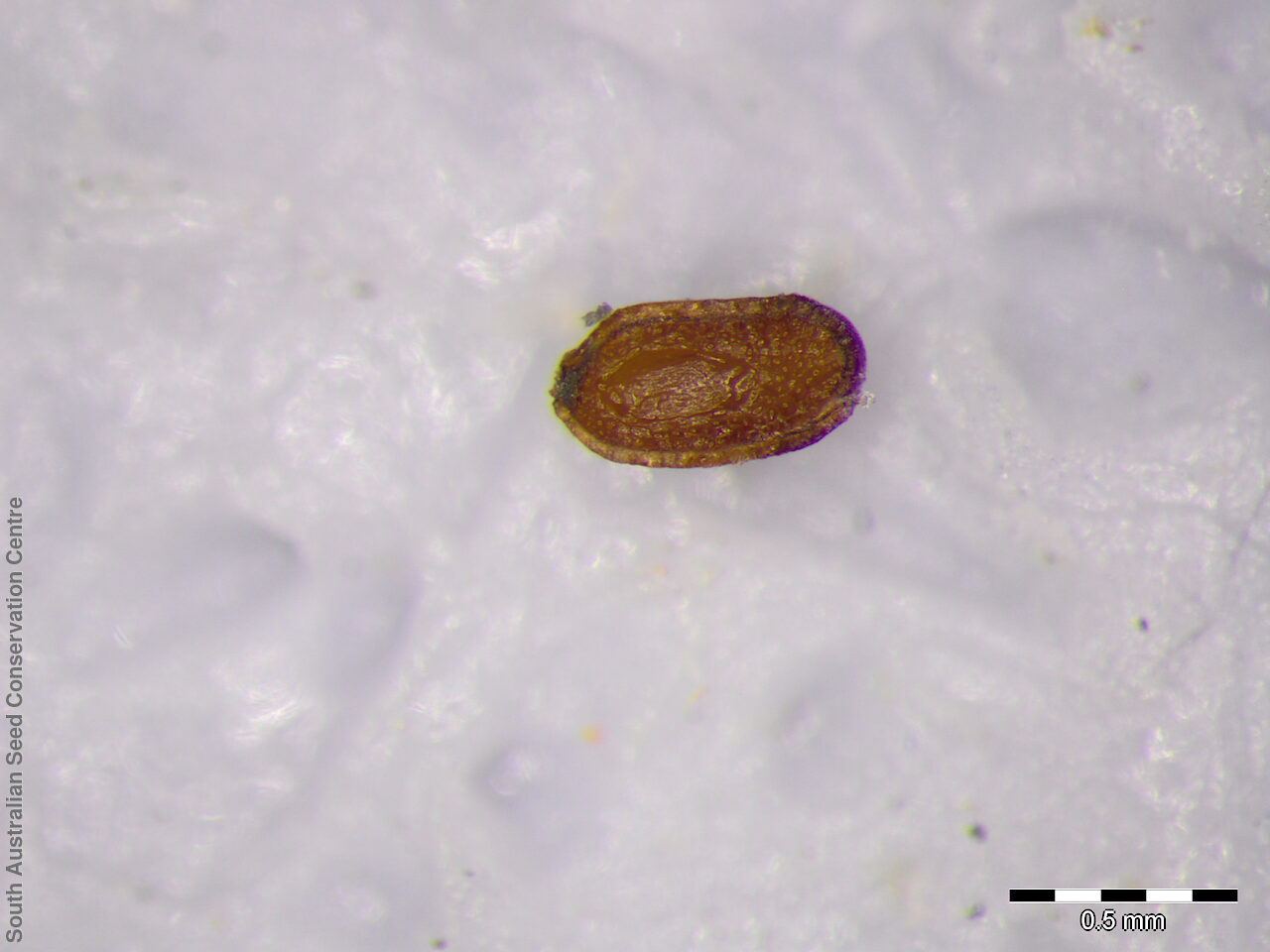
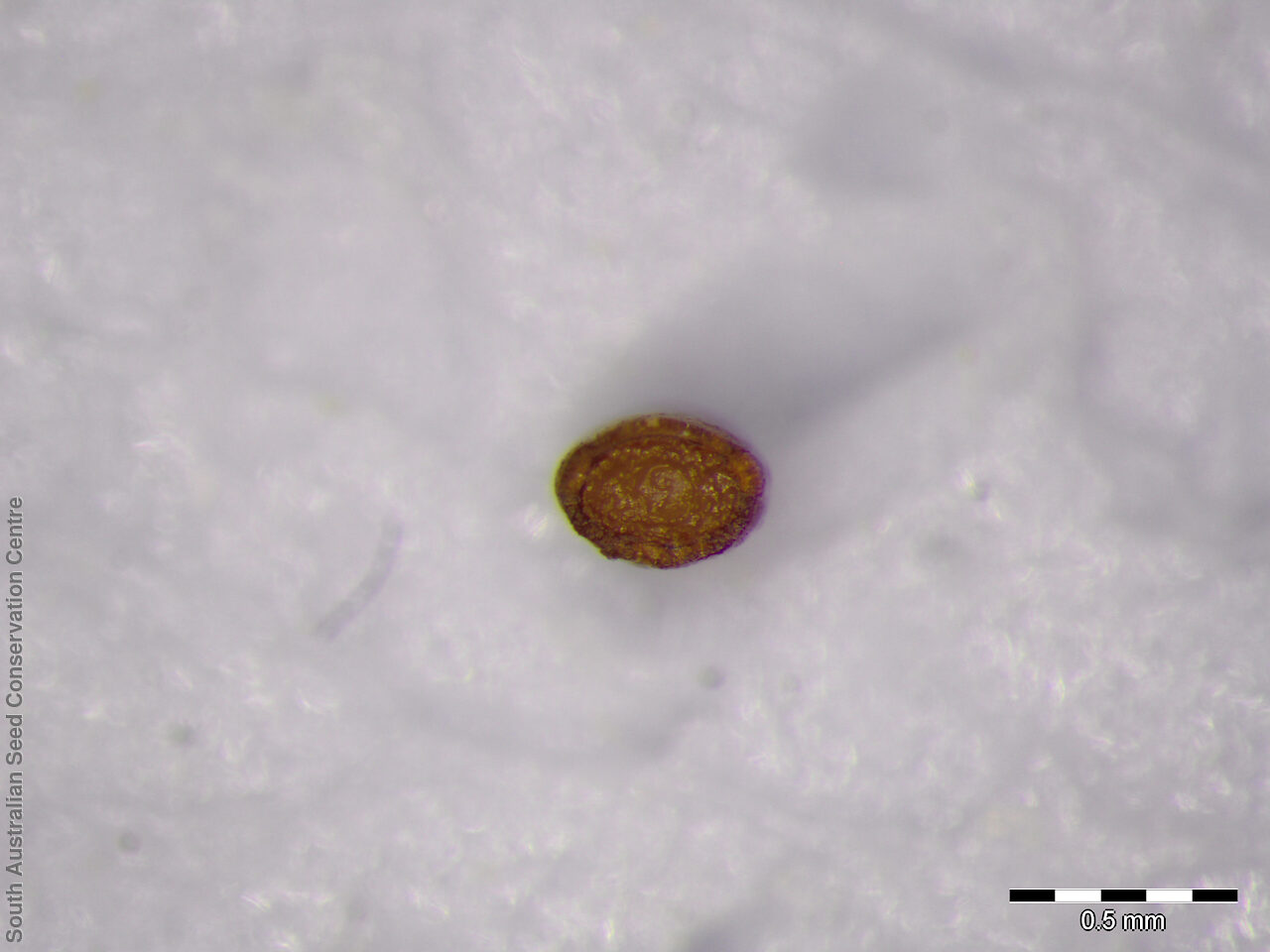


Botanical art
Etymology
Lobelia, named after Mathias de Lobel (1538-1616), physician to William of Orange and then botanist to James I of England. Pratioides, means resembling Pratia, a genus named after Charles Prat-Bernon, a midshipman on Freycinet's scientific voyage around the world, who died just after their departure in 1817.
Distribution and status
Found in the South-east in South Australia growing in swampy areas. Also found in New South Wales, Victoria and Tasmania. Native. Rare in South Australia. Rare in New South Wales and Tasmania. Common in Victoria.
Herbarium region: South Eastern
NRM region: South East
AVH map: SA distribution map (external link)
Plant description
Prostrate to decumbent perennial herbs with often fleshy adventitious roots along the branches; short spreading hairs at least on young branches. Leaves with no stalk, with a long cuneate base, to 25 mm long and 5 mm wide, with widely spaced teeth or serrations along the whole margin; short spreading hairs on young leaves. Flowers single in the axils of leaf-like bracts at the apex of branches, with off-white or blue-tinged flowers. Flowering between November and January. Fruits are yellow, ovoid capsule to 5 mm long; ridged, hairy. Seeds are brown ovoid seed to 0.8 mm long and 0.5 mm wide, with fine wrinkled surface. Seed embryo type is linear, under-developed.
Seed collection and propagation
Collect seeds between January and March. Collect mature capsules that are fat, turning a pale straw-colour and containing brown seeds. Can be time consuming to find mature capsules. Place the capsules in a tray and leave to dry for one week. Rub the capsules gently by hand to dislodge the seeds. Use a sieve to separate the unwanted material. Be careful as the seeds are very small. Store the seeds with a desiccant such as dried silica beads or dry rice, in an air tight container in a cool and dry place. From one collection, the seed viability was high, at 100%.
| Location | No. of seeds (weight grams) | Number of plants | Date collected | Collection number Collection location | Date stored | % Viability | Storage temperature |
|---|---|---|---|---|---|---|---|
| BGA | 14,500 (0.88 g) | 50+ | 10-Feb-2011 | DJD2129 South Eastern | 1-Jan-2012 | 100% | +5°C, -18°C |
Number of plants: This is the number of plants from which the seeds were collected.
Collection location: The Herbarium of South Australia's region name.
% Viability: Percentage of filled healthy seeds determined by a cut test or x-ray.